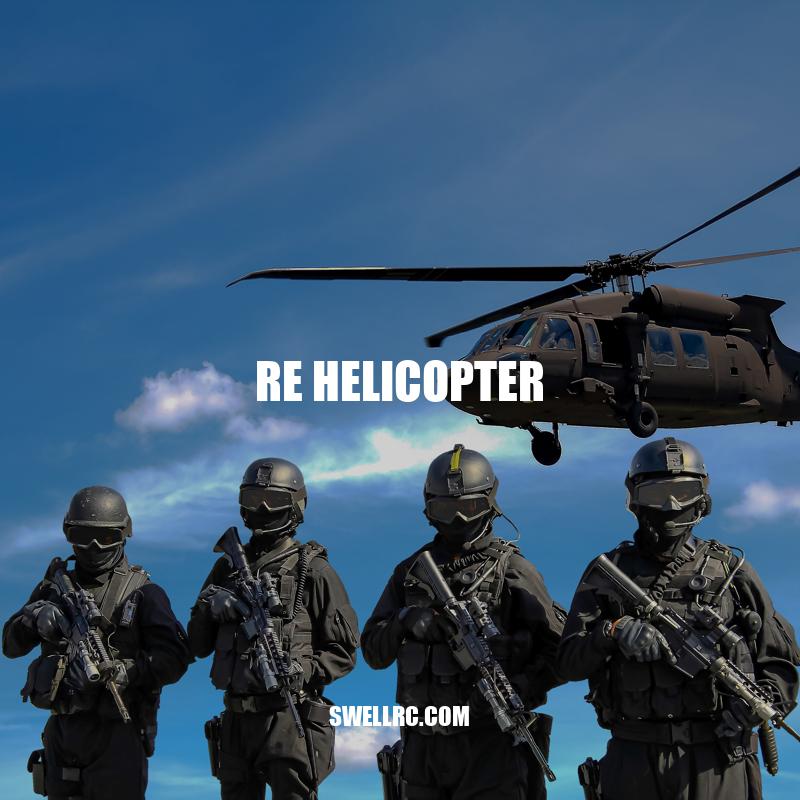The Evolution and Applications of Helicopters
For decades, the world has been fascinated by helicopters. They represent a remarkable achievement in engineering and innovation, allowing for vertical takeoff and landing as well as unparalleled maneuverability in the air. Helicopters have a long and storied history that dates back to the early 20th century. Early pioneers in the field include Igor Sikorsky and Juan de la Cierva, who developed many of the key technologies that would later allow helicopters to become a vital part of modern aviation. While initially used mainly for military purposes in the mid-20th century, helicopters have since found a wide range of applications in both civilian and commercial settings. Today, they are used for everything from emergency medical services to oil and gas exploration to tourism. Despite ongoing challenges related to safety and efficiency, helicopters continue to be an important and innovative part of the aviation industry, with exciting advancements on the horizon.
Types and Applications of Helicopters
Helicopters come in all shapes and sizes, and are designed for a variety of purposes. Below are some of the most common types of helicopters and their applications:
- Military Helicopters– These are designed for use by the military, and typically come in two types: Attack Helicopters (used to attack enemy targets) or Transport Helicopters (used to carry troops and supplies).
- Civilian Helicopters– These are used for a wide range of purposes, from executive travel to search and rescue.
- Emergency Medical Services Helicopters– These are equipped with specialized medical equipment and staff, used to transport patients in emergency situations.
- Tourism Helicopters– These are designed for scenic flights or sightseeing tours. They are often used in cities, over natural wonders, and in remote areas.
- Oil and Gas Exploration Helicopters– These are used to transport personnel and supplies to offshore rigs. They also play a key role in pipeline construction and maintenance.
- Flying Taxis– These aircraft are at the forefront of technology with designs aimed to provide fast transport services between airports or to other parts of the city.
As we can see, helicopters have a diverse range of applications in today’s world, from military operations to tourism. Depending on the type of helicopter, the design and function will vary. For example, military helicopters are designed with a camouflage exterior and plenty of weaponry for attack helicopters. Meanwhile, transport helicopters are built with a larger spectrum of rotor blades capable of transporting more weight such as troops or supplies. With the advancements in technology, new types of helicopters, such as flying taxis, are emerging, pointing towards a future with more even opportunities to travel by air.
What are the applications of helicopters?
Helicopters have various applications, including transportation of people and cargo, military operations, construction, firefighting, search and rescue, tourism, medical transportation, law enforcement, agriculture, news and media, and aerial observation. For more information on helicopter applications, visit websites such as rotor.org or verticalmag.com.
How Do Helicopters Work?
Helicopters work by using rotors to generate lift and thrust, allowing them to move in any direction. Below are the basic components and principles that make helicopters fly:
- Rotors– Helicopter rotors are made up of blades that are shaped like airfoils, similar to airplane wings. As they spin, the rotors create lift, allowing the helicopter to rise into the air
- Engine– The engine provides the power needed to turn the rotor blades.
- Collective Pitch Lever– This controls the angle of the rotor blades and helps the helicopter to gain altitude.
- Cyclic Pitch Stick– This controls the direction of the helicopter by changing the angle of the rotor blades as they spin.
- Tail Rotor– The tail rotor helps the helicopter to maintain stability and prevent it from spinning in the opposite direction of the main rotors.
- Fuselage– The main body of the helicopter, which houses the cockpit, passengers or cargo.
One interesting fact about helicopters is that they are capable of hovering in place, or even flying backwards. This is achieved by adjusting the angle and speed of the rotor blades. Another interesting fact is that helicopters can be flown in almost any type of weather, including rain, snow, and even high winds.
The table below outlines the technical specifications of some commonly used helicopters:
| Helicopter Model | Cruise Speed (mph) | Range (miles) | Max Payload (lbs) |
|---|---|---|---|
| Bell 206 JetRanger | 126 | 430 | 1,436 |
| Sikorsky S-76 | 155 | 410 | 4,760 |
| AgustaWestland AW109 | 168 | 599 | 3,640 |
Understanding how helicopters work can help us to appreciate the engineering behind these unique and versatile aircraft. In order to become a helicopter pilot, one must undergo extensive training in order to master the art of flying and operating these complex machines.
How does a helicopter works?
A helicopter works by using the rotation of its rotor blades to generate lift. The rotor blades are shaped like airfoils, with a curved shape on top and a flatter shape on the bottom. As the blades spin, air flows over them faster on the curved side, creating less air pressure and causing suction that lifts the helicopter off the ground. For more detailed information on how helicopters work, check out websites like howstuffworks.com or helicopterhistorysite.com.
Challenges of Operating Helicopters
While helicopters are versatile and useful aircraft, they also come with their own set of challenges. Below are some of the main difficulties associated with operating helicopters:
- Turbulence– Helicopters are more susceptible to turbulence than fixed-wing aircraft, and pilots must be able to navigate through rapidly changing wind conditions.
- High altitude– At high altitudes, helicopters may have difficulty generating sufficient lift to stay in the air.
- Weather conditions– Helicopters can be more affected by weather conditions than other aircraft due to their smaller size and slower speed.
- Maintenance– The complex mechanical components of helicopters require regular maintenance in order to prevent mechanical failures and ensure safe operations.
- Training– Helicopter pilots require specialized training in order to operate these complex machines safely and effectively.
- Noise pollution– Helicopters are notoriously loud, and their noise levels can cause noise pollution and disturbance in the surrounding areas.
One way to mitigate some of these challenges is to invest in advanced helicopter technology. For example, some newer helicopter models feature advanced avionics systems that make it easier for pilots to navigate and communicate in difficult conditions. Additionally, continuous improvements to helicopter designs and engine technology promise to make these aircraft both more efficient and more environmentally friendly in the future.
For those interested in learning more about the challenges and rewards of helicopter flying, there are many resources available online. Helicopter training schools offer comprehensive training programs for new pilots, as well as continuing education courses for experienced pilots. Aviation enthusiasts can also find a wealth of information about helicopters and related topics on aviation websites and forums.
Is it difficult to operate a helicopter?
According to a recent article, helicopters are typically more challenging to operate than airplanes, leading to higher training costs. Nonetheless, there are significant advantages to flying a helicopter. For more information on helicopter flying, visit aviation websites such as pilotmag.com or rotorandwing.com.
The Future of Helicopter Technology
As technology continues to advance, the future of helicopter technology is looking very promising. Future helicopter designs promise to be safer, more efficient, and more environmentally friendly. Here are some of the ways helicopter technology is evolving:
- Electric helicopters- Electric helicopters are becoming more common as battery technology improves. These helicopters offer a number of advantages over traditional gas-powered helicopters, such as lower noise levels and reduced emissions.
- Autonomous helicopters- Autonomous helicopters are currently in development, and have the potential to transform the way helicopters are used. These unmanned aircraft could be used for a variety of applications, such as search and rescue, transportation, and cargo delivery.
- Improved safety features- Future helicopter models promise to feature improved safety features such as advanced avionics systems, collision avoidance technology, and emergency landing systems.
- Reduced noise levels- Manufacturers are working to reduce the noise levels of helicopters through improved engine designs and noise-dampening technology.
As helicopter technology advances, these aircraft will become even more valuable for a range of industries. Emergency medical services will be able to transport patients more quickly and safely, while industries such as tourism and oil exploration will be able to operate more efficiently. Helicopters will continue to play a crucial role in military operations as well.
In conclusion, the future of helicopter technology is bright, with advancements in electric and autonomous technology, safety features, and noise reduction. The versatility of these aircraft, coupled with ongoing improvements in technology, make helicopters an important part of modern aviation.



